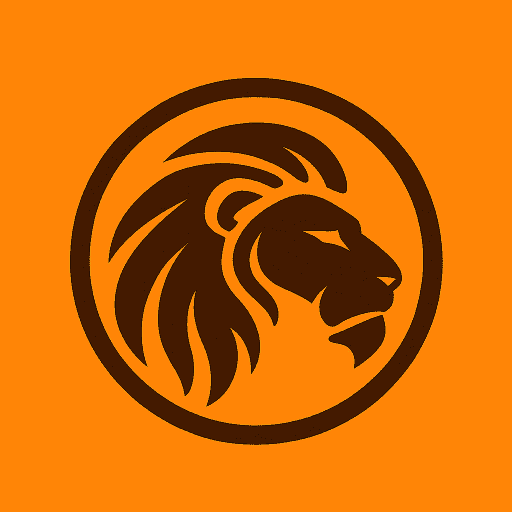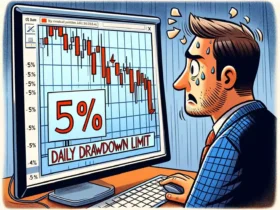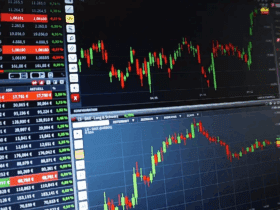In this article, I will cover the Emerging Prop Firm Models Changing Trading the access traders have to capital, how traders manage risk, and the expansion of their strategies.
AI-driven risk management, Decentralized Finance (DeFi) – native platforms, gamified trading, and trading constructed around NFT identities are all models that are increasing the accessibility, transparency, and performance of trading and proprietary trading in the world.
What are Emerging Prop Firm Models Changing Trading?
New models for proprietary (prop) firms are changing the trading landscape in how traders obtain capital access, profit sharing, and risk management.
Compared to traditional prop firms which required traders to fund their accounts and meet rigorous criteria, the new models are more remote, have lower access thresholds, and more flexible funded accounts.
Many of these firms are focused on criteria whereby traders can prioritize capital scaling over resource allocation. Consequently, trading has moved from opaque, expensive, and speculative frameworks to transparent, inexpensive, and informed trading, as new technology armed with analytics and risk assessment frameworks is available.
The changes being made are in access to trading, profs, and capital, and are in how talent is spotted, funded, and retained in the trading world.
Why Use Emerging Prop Firm Models Changing Trading
Access to Capital With No Personal Risk
- Large funds are managed for the firm, and no money at all is put up by the trader.
- Funding grows in line with the trader’s performance as consistent profitability is achieved.
Remote and Flexible Trading
- Online platforms allow the trader to operate from any location in the world.
- Different trading strategies are supported by flexible trading hours and a wide range of asset classes.
Advanced Trading Tools and Risk Analysis
- AI, smart contracts, automation, and other tech innovations achieve trading performance and error minimization.
- More sophisticated analytics enhances the quality of trading decisions.
Scaling and Performance Analysis
- Traders receive a profit split and have the ability to scale their capital, driving performance for all.
- Growth is driven by performance, not by an investor’s money, reputation, or huge initial capital.
Skill Enrichment
- Mentorship, training, and social trading are other collaborative features which propel the focus of a trader.
- Exchanges of ideas enhance the development of sophisticated strategies.
New Models and Transparency
- Transparency and trust are enhanced with DeFi-native models and trading platforms using NFT identities.
- Operational friction is reduced, resulting in a trading ecosystem that is modern and highly accountable.
Emerging Prop Firm Models Changing Trading Points
- DeFi-Native Prop Firms – Leverage decentralized finance protocols to fund and manage traders’ capital.
- AI-Powered Risk Management – Use artificial intelligence to monitor trades and optimize risk automatically.
- Gamified Prop Trading Platforms – Integrate game-like features to make trading more engaging and competitive.
- Multi-Asset Prop Firms – Allow traders to operate across stocks, crypto, forex, and commodities.
- Copy-Trading Enabled Prop Firms – Let traders replicate strategies of top performers for faster learning and profits.
- Regulated Prop Firms – Operate under legal frameworks to ensure transparency and investor protection.
- Low-Fee, No-Time-Limit Models – Offer minimal costs and flexible evaluation periods for traders.
- Scaling Plan-Driven Firms – Provide structured capital growth plans based on performance milestones.
- NFT-Based Trader Identity – Use NFTs to verify trader achievements and grant access to exclusive firm benefits.
9 Emerging Prop Firm Models Changing Trading
1. DeFi-Native Prop Firms
Integrating DeFi protocols directly into prop trading models is the way DeFi-native prop firms are changing prop trading. Unlike other trading firms, they no longer have middlemen, which means traders can get blockchain-based capital and platform access to implement strategies.
Funding validation is borderless and accessible to traders with skill, thanks to instant settlement, no-opt-in settlement, and no middlemen.

Smart contracts facilitate the rapid and automated enforcement of risk parameters and profit distribution, thus streamlining operations and mitigating the probability of error.
Reduced risk of error and oversight, combined with automation and decentralization, prop DeFi-native trading firms to prioritize and abstract processes from traders and plug them into automated streams. There is little to no challenge to their installed, trusted prominence in the DeFi trading space.
DeFi-Native Prop Firms Features
- Decentralized Capital Accessibility – Traders can fund their accounts using blockchain protocols without having to access intermediaries.
- Automated Transparency – Smart contracts guarantee a no-hid system of rule enforcement as well as profit distribution.
- Unrestricted Participation – Traders can pop in from any country and profit from trading without geographic location and regulatory constraints.
2. AI-Powered Risk Management
AI-driven risk management integrates real-time intelligence and predictive analytics into decision-making, profoundly changing proprietary trading.
Recently established prop firms implement market condition supervision, risk identification, and trading position adjustments through advanced AI algorithms, all of which are aimed towards the mitigation of human error and emotional bias.

Such systems and technologies allow traders to devise strategy adjustments through insights generated from data, instantaneously respond to and control volatility, and consistently perform amid ever-shifting market conditions.
The control of artificial intelligence over risk and the allocation of capital within proprietary trading systems presents a paradigm shift within the trading industry, increasing the efficiency, flexibility, and scalability of trading firms.
The profound impact AI-based risk management has on transforming prop trading explains the recent extensive integration of risk management and AI within the industry.
AI-Powered Risk Management Features
- Risk-Adjusted Position Monitoring – AI tracks and manages the loaded positions and real-time changes in the order flow and trading risk.
- Automated Risk Constraints – Adjustments on trades are made to stop excessive losses on the system.
- Analytics-Driven Approach – Predictive analytics are employed to guide strategy formulation and optimize capital allocation.
3. Gamified Prop Trading Platforms
Prop trading platforms that are gamified take new trading technologies and shift trading performance and learning into an enjoyable game-like experience.
New and innovative trading techniques and technologies score and pace gamified learning and trading with the use of scoreboards and trading challenges. Skill acquisition and risk mitigation are made fun and rewarding.

They integrate fun with trading to entice participants who are impatient and intimidated by older trading techniques. Gamified trading technologies and techniques score competitive progress, trader active engagement, and retention.
This new modern innovative approach makes gamified prop trading platforms a disruptive trading technology and trading technique.
Gamified Prop Trading Platforms Features
- Playing while Understanding – Gamified challenges, levels, and points create a complex system of interaction while trading.
- Competitive Incentives – Gamified systems encourage positive performance increments.
- Disciplined Approach – Gamification rewards self-correction.
4. Multi-Asset Prop Firms
Unlike most prop trading firms that focus on a single asset class like equities or forex, multi-asset prop trading firms are allowing traders to diversify not just their trading strategies, but the markets they work on simultaneously.
These recently created firms enable traders to operate on a variety of assets, including stocks, forex, crypto, commodities, derivatives, and more, all on the same account.

This leads to the breaking of the single-asset trading limitation and transforms a single trader into a one-person hedge fund capable of devising and crossing forex and equities, crypto and commodities, derivatives and commodity crypto, or crypto and equities strategies.
The ability to innovate endlessly and integrate multi-market strategies helps improve the prop trading firms tremendously.
Multi-Asset Prop Firms Features
- Varied Trading Options – Participants can trade stocks, crypto, forex, commodities, and their related derivatives.
- Market Risk Hedging – Integrated strategies can help close out on excessive risks from any one asset.
- Optimized Capital Allocation – Combined use of various market systems enhances trading opportunism.
5. Copy-Trading Enabled Prop Firms
Copy-trading enabled prop firms are transforming the trading world by allowing less experienced traders to replicate the strategies of top traders in real-time.
This new model provides newcomers with the opportunity to earn as they learn, minimizing the risks that beginners usually encounter as they try to figure out the trading. These firms leverage social trading features with profit-sharing.

This provides a performance-driven ecosystem that rewards successful strategies, which encourages scaling.
The real-time automated duplication of strategies, combined with mentorship, is what makes copy-trading-enabled prop firms revolutionary, creating modern proprietary trading with advanced skill competencies and wider accessibility.
Copy-Trading Enabled Prop Firms Features
- Strategy Replication – Traders follow and replicate the strategies of the highest earners.
- Faster Learning Curve – Beginners earn income while gaining experience by imitating the strategies of others.
- Performance-Based Ecosystem – This encourages transparency while skillful traders receive benefits.
6. Regulated Prop Firms
These regulated prop firms mesh the freedom provided by contemporary proprietary trading models with the security that comes from official oversight. Unlike traditional, unregulated setups, these firms provide the disclosure, protection, and compliance with the law that comes with trading transparency.

The capital provided for trading is safe, the contractual obligations are unambiguous, and the risk is managed consistently and constructively.
This promotes confidence and loyalty. However, the combination of innovation and the restraints of regulation and compliance is what draws serious traders—those that are willing to forgo compliance at the expense of innovation. It is this confidence that is driving regulated proprietary trading firms to become the new archetype for prop trading.
Regulated Prop Firms Features
- Compliance and Security – Legal compliance means documented security and overt passages of all operations.
- Capital Protection – All participants know the rules and structures surrounding the operations that protect trader and investor capital.
- Credibility Boost – This draws in traders who are professionals needing reliable and cutting-edge innovations.
7. Low-Fee, No-Time-Limit Models
No-fee and no-time-limit proprietary firm models are changing the paradigm of trading by eliminating the financial and time constraints that adversely affect trader performance.
While other firms charge exorbitant prices and impose unreasonable evaluation time frames, these new models focus on the trader developing a consistent strategy at no cost, removing the pressure of time and cost.

By offering no time limits and low evaluation costs, these firms position themselves as skill builders by focusing on sustained, prolonged growth rather than short, quick, grasping results.
This continual growth focus results in the building of disciplined trading which in turn reduces the stress of the trader and broadens their talent scope. It is this unique combination that is changing the face of trading.
Low-Fee, No-Time-Limit Models Features
- Minimal Entry Costs – New traders can more easily gain access.
- Unlimited Evaluation Period – No internal pressure encourages traders to focus on consistent performance.
- Encourages Discipline – The lack of pressure promotes long-term strategy development in the absence of a limit.
8. Scaling Plan-Driven Firms
Focused on scaling plan-driven proprietary trading firms transform trading as they offer structured ways for traders to increase their capital through growth milestones.
Unlike traditional firms, which provide assigned funding or increases based on arbitrary limitations, these new types of trading firms increase account sizes based on sustained profitability, adept risk control, and progression of trading.

The ability to grow capital with no reverse limitation increases traders’ focus and motivates them to improve their profitability and trading discipline.
As a result, these plan-driven proprietary trading firms offer facilities to attain and maintain a trading career using sustainable methods. Their ingrained focus on systematic capital progression and growth determines why they are changing the landscape of proprietary trading.
Scaling Plan-Driven Firms Features
- Performance-Based Growth – Account size increases when traders achieve certain milestones.
- Transparent Progression – Scaling rules remove ambiguity which encourages discipline.
- Sustainable Trading Careers – Long-term success and responsible risk-taking will come from structured growth.
9. NFT-Based Trader Identity
NFT traders’ models are altering prop trading in blockchain technology, advanced signature verifiable proofs of accomplishments, real-time trader reputation ratings, and access privileges.
Digital trading credentials in the form of NFTs are issued to individual traders, recording performance history along with highlights and participation in exclusive training and trading programs.

This ensures quicker access to lesser capital and higher trading tools, funding identity fraud, trading tool abstaining. seamless transparency compliance provisioning Reduction Gamified recognition and prestige staking decentralized verification tie NFTs to market reputation and prop trading closes the threshold asymmetry.
This is the prop trading revolution market reputation and prop trading closes the threshold asymmetry. This is the prop trading revolution.
NFT-Based Trader Identity Features
- Verified Achievements – NFTs provide on-chain proof of a trader’s achievements and milestones.
- Exclusive Access – Access additional funding, programs, or tools with NFT-based proof ownership.
- Transparency and Recognition – Skills and trading history are transparent and verifiable publicly.
Pros & Cons
Pros:
- Access to Capital Without Personal Risk – Traders are able to manage larger accounts without the risk of losing their own money.
- Asynchronous and Remote Trading – All traders can work anywhere, at any time, and even choose the trading instruments.
- Results-Driven Growth – Consistent performance enables traders to obtain higher funded accounts and kept capital.
- Innovative Risk Management and Strategy Development – Traders can use AI and other analytics to develop trade strategies while automated risk management keeps risk exposure in check.
- Accelerated Learning with Community and Mentorship – Skill development is fostered with integrated training, mentorship, and community social features.
- Innovative Funding and Transparency – NFT-based identity models and DeFi-native funding streamline and credibility and trust to the entire process.
Cons:
- Challenging Trading Expectations – Traders are expected to constantly produce results so that their funding is not pulled.
- Capital Gains are not Yours – Income is capped since the firm keeps a portion of trading profits as commission.
- Stringent Work Requirements – Some models impose severely restrictive conditions which are detrimental to trade and risk management.
- Reliance on Modern Tech – Putting unmitigated capital to work trust tools like AI and blockchain can expose traders to undue operational risk.
- Insufficient Stability Over Time – Emerging models have unclear reliability since futuristic regulations can disrupt their model.
Conclusion
New proprietary trading firm models are reshaping the market through innovation and accessibility. From decentralized finance platforms and artificial intelligence risk management to gamified trading and NFT trader identities, these models provide previously inaccessible capital, tools, and growth opportunities.
They emphasize performance, transparency, and adaptability, accommodating traders of all skill levels to flourish. Deficiencies, such as profit splitting and performance pressure, are counterbalanced by skill acquisition, technologically advanced funding, and the ability to scale, making these models transformational. They are redefining the funding, assessment, and reward systems of traders in the market.
FAQ
It involves using artificial intelligence to monitor market conditions, manage risk, and optimize trades in real-time, reducing human error and emotional bias.
They make trading interactive and engaging through points, levels, challenges, and leaderboards, motivating traders to improve skills while competing in a game-like environment.
Emerging prop firm models are innovative proprietary trading structures that leverage technology, decentralized finance, AI, gamification, and flexible funding to provide traders with capital, tools, and growth opportunities unlike traditional firms.
They use blockchain protocols to fund and manage traders’ capital, enabling transparency, instant settlements, and permissionless participation without traditional intermediaries.












Leave a Reply